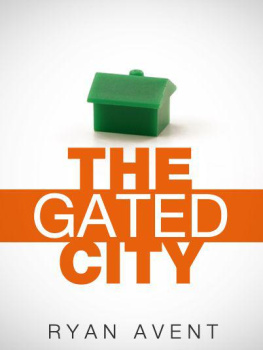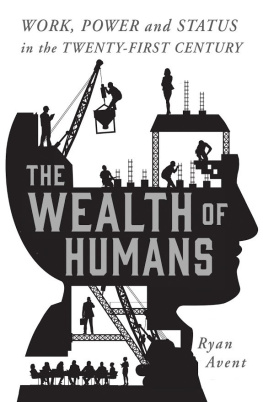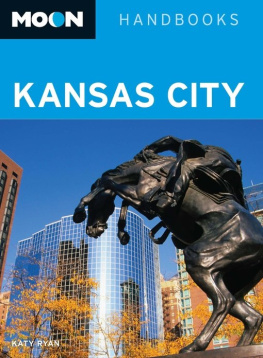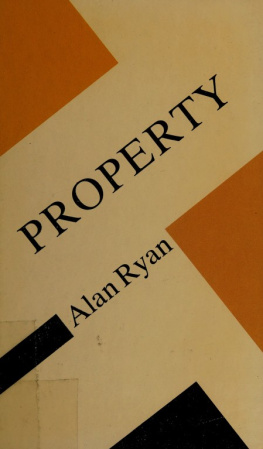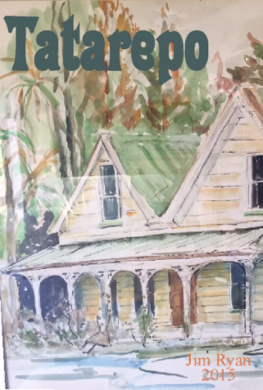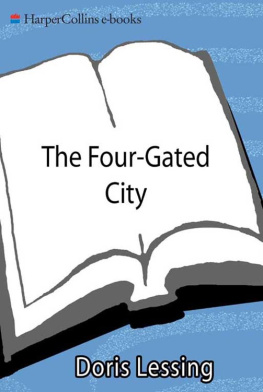Ryan Avent - The Gated City
Here you can read online Ryan Avent - The Gated City full text of the book (entire story) in english for free. Download pdf and epub, get meaning, cover and reviews about this ebook. year: 2011, publisher: Kindle Single, genre: Politics. Description of the work, (preface) as well as reviews are available. Best literature library LitArk.com created for fans of good reading and offers a wide selection of genres:
Romance novel
Science fiction
Adventure
Detective
Science
History
Home and family
Prose
Art
Politics
Computer
Non-fiction
Religion
Business
Children
Humor
Choose a favorite category and find really read worthwhile books. Enjoy immersion in the world of imagination, feel the emotions of the characters or learn something new for yourself, make an fascinating discovery.
- Book:The Gated City
- Author:
- Publisher:Kindle Single
- Genre:
- Year:2011
- Rating:3 / 5
- Favourites:Add to favourites
- Your mark:
- 60
- 1
- 2
- 3
- 4
- 5
The Gated City: summary, description and annotation
We offer to read an annotation, description, summary or preface (depends on what the author of the book "The Gated City" wrote himself). If you haven't found the necessary information about the book — write in the comments, we will try to find it.
The Gated City — read online for free the complete book (whole text) full work
Below is the text of the book, divided by pages. System saving the place of the last page read, allows you to conveniently read the book "The Gated City" online for free, without having to search again every time where you left off. Put a bookmark, and you can go to the page where you finished reading at any time.
Font size:
Interval:
Bookmark:
The Gated City
How America Made its Most Productive Places Ever Less Accessible
Ryan Avent
Throughout this book I use the word city as a general term to refer to metropolitan clusters of economic activity, synonymous with metropolitan area or metro. In using simple city names like New York or San Jose, I refer to metropolitan areas. When I wish to refer to a specific municipality, I use the official name, as in New York City or Santa Clara County. I use the metropolitan statistical area definitions set by the Office of Management and Budget and used by most government agencies.
Population density statistics are weighted averages, weighted by population and computed across Census tracts. I regard this as a more informative metric than simple population density. It is the population density at which the average resident of a metropolitan area lives. The simple population density for the New York metropolitan area, for instance, was a little over 5,000 people per square mile at the time of the 2000 Census, but the vast majority of New Yorkers live at densities higher than that. Indeed, the typical New Yorker lives at a population density closer to 35,000 people per square mile.
Data on wages per job and economic output are taken from the Bureau of Economic Analysis. All employment figures are from the Bureau of Labor Statistics. Data on population, domestic migration, number of households, household income, median home prices, and new housing units come from the Census Bureau. Home price data from the S&P/Case- Shiller index are also used. Other data points are taken from research cited in the reference section at the end of this book.
AMERICA is rich. Dont let anyone tell you differently. As of 2011, the US economy is the world's largest. China's may overtake it within a decade, but when it does it will use nearly 1.4 billion people to produce what America makes with 324 million. That productivity advantage underlies the still-yawning gap between the average incomes of American and Chinese workers. For decades, country after country has grown rapidly, sparking worries in America that it might be overtaken. Yet among large countries, America's output per person is easily the world's best. Sure, Americans work longer and harder than most other rich world citizens. And yes, Americans owe some of their advantage to their lesser willingness to trade off growth in GDP for other goods, like a substantially smaller contribution to climate change. But there is no getting around the fact that America is one of the richest places the world has ever known.
Americans can nonetheless be excused for feeling concern over the state of their national economy. Recent growth rates -- overall and per person -- slowed from their scorching postwar pace in the 1970s, then downshifted again from 2000. The decade that followed, the 2000s, was by some measures America's worst economic performance in a century. The income of the typical American has been stagnating for years. The top 1% of earners control a larger share of national income than at any time since the years immediately prior to the Great Depression. And even before the Great Recession, labor force participation rates for the American economy were falling.
The American economy isn't running like it used to. And when it does run, a huge share of the American population doesn't share in the benefits. Something has changed. Something has gone wrong.
But what? There's no shortage of potential explanations. Here are a few:
- Worker bargaining power has declined. In this view, articulated most clearly by economist and Nobel Prize winner Paul Krugman , the great political shifts of the last 30 years changed the American growth model. Beginning in the 1970s, many of the progressive gains achieved in previous decades were rolled back. Rules supporting labor unions were weakened while rules enabling business were adopted. Tax rates for top earners fell. Industries were deregulated. And as a result, workers were less able to capture a share of the gains from growth while top earners were able to keep more of the benefits of growth than ever. Widening inequality reduced the potential for broad-based growth and fueled instability, as ever more households found themselves taking on debt in order to maintain living standards. Eventually, crisis struck.
- The demand for skills has shifted. America's dynamic economy and its middle class were built on growth in middle-skill employment. For much of last century, skilled manufacturing and semi-skilled office labor were in high demand among US firms. But as technology improved, automation eliminated many of these positions -- robots now build the cars and computers manage the books. Technology allowed a relocation of other jobs to places with lower labor costs. A huge mass of middle-skilled workers suddenly found itself competing with low-skilled workers, in America and abroad, for low-skill jobs. At the same time, technology increased the return to high-skill positions. The Internet now allows a skilled designer to serve customers around the world, substantially increasing his potential returns. Economists Lawrence Katz and Claudia Goldin further argue that America's educational system has not been very successful at increasing educational attainment. While the demand for skills rose, the supply of highly educated Americans lagged, leading to tight labor markets and high wages for the most educated, and a glutted market plagued by stagnant wages for the rest.
- The emerging world is catching up. Europe and America combined make up a fairly small percentage of global population -- about 15%. Yet the European and American economies account for nearly half of global output. For a variety of reasons, most of the world's population has remained quite poor while Europe and America have grown rich. But this is now changing. Early in the postwar period, Japan began experiencing fast catch-up growth. Other Asian "tigers" followed. With the fall of the Soviet Union, much of central and eastern Europe began growing rapidly. The latest and most impressive boom occurred in Asia once again, where the world's two largest countries -- China and India -- are now moving hundreds of millions of people out of dire poverty. This is unequivocally good for humanity. But it's also somewhat destabilizing. As hundreds of millions of poor Chinese and Indian workers begin selling their labor on global markets, old models of production suddenly cease to make sense. American and European workers are expensive, and should be put to work doing highly productive things. But these workers must be prepared to take different jobs, and the business and public infrastructure must be in place to allow them to do different things.
This adjustment process takes a while. And while it continues, incomes for many American workers will stagnate, prices for many basic resources will rise, and growth may slow. Ultimately everyone will be better off, but during the transition period some people will be made worse off.
- The low-hanging fruit is gone. Economist Tyler Cowen argues that the rich world rode a wave of low-hanging fruit to prosperity in the years between the onset of the Industrial Revolution and the chaotic 1970s. Lots of empty land was put to use. Uneducated populations became highly educated. And centuries of revolutionary technological innovations were exploited to their fullest. But now, he says, most of these gains have been used up. The best land is occupied and must be reallocated if uses are to change -- a costly process. Roughly half of all young people now go to college. To improve educational attainment further means pushing underperforming students to do better, or shifting large numbers of college graduates into post-graduate study -- again, very costly processes. And while some impressive technological developments continue to occur, most notably in the world of telecommunications and the Internet, invention isn't what it used to be. The world is no longer producing the automobile, or electricity, or antibiotics, or television, or powered flight, or air conditioning, or any number of life-altering technologies on a regular basis. And so growth has slowed.
Font size:
Interval:
Bookmark:
Similar books «The Gated City»
Look at similar books to The Gated City. We have selected literature similar in name and meaning in the hope of providing readers with more options to find new, interesting, not yet read works.
Discussion, reviews of the book The Gated City and just readers' own opinions. Leave your comments, write what you think about the work, its meaning or the main characters. Specify what exactly you liked and what you didn't like, and why you think so.

